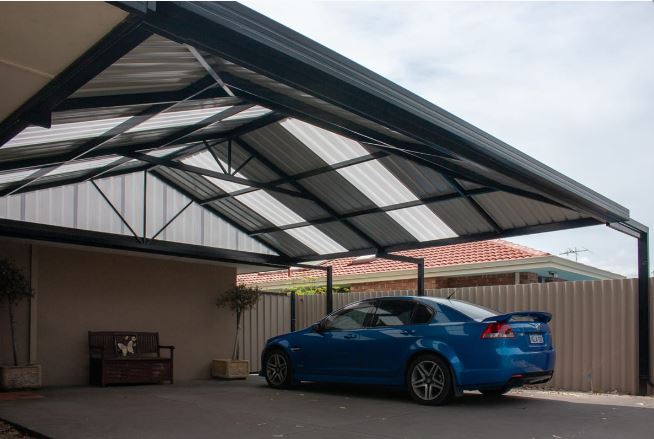What Are the Examples of Signage?
In the bustling streets of urban landscapes and the serene corners of suburban neighborhoods, signs are the silent communicators that guide, inform, and engage us every day. From the moment we leave our homes to the minute we return, signage surrounds us, shaping our experiences and interactions with the environment.
Among the diverse array of signs, building signage stands out as a crucial component, not only for businesses but also for communities at large. Let’s dive into the world of signage, exploring its various examples and the significance of building signage in particular.
Understanding Signage
Signage, in its broadest sense, encompasses any visual graphics or displays intended to convey information to a specific audience. From simple road signs indicating directions to elaborate digital displays in commercial spaces, the spectrum of signage is vast and multifaceted. These signs serve a multitude of purposes, including:
- Navigation: Signs guide individuals through unfamiliar spaces, helping them find their way efficiently and safely.
- Identification: Signs identify businesses, institutions, landmarks, and other points of interest, making them easily recognizable and accessible.
- Communication: Signs convey messages, announcements, promotions, and other information relevant to the intended audience.
- Branding: Signage plays a pivotal role in branding strategies, contributing to the overall identity and image of businesses and organizations.
Examples of Signage
Let’s explore some common examples of signage that we encounter in our daily lives:
Outdoor Signs:
- Billboards: Large outdoor advertisements typically found along highways and busy streets, capturing the attention of passing motorists and pedestrians.
- Street Signs: Essential for navigation, street signs provide information about road names, intersections, and traffic regulations.
- Wayfinding Signs: These signs provide directional guidance to help people navigate complex environments such as airports, malls, and campuses.
- Monument Signs: Often seen at the entrances of commercial properties, monument signs display the names and logos of businesses or communities.
Indoor Signs:
- Directory Signs: Found in large buildings and complexes, directory signs help visitors locate specific businesses, offices, or facilities.
- Informational Signs: These signs provide valuable information such as operating hours, safety instructions, and facility rules.
- ADA Signs: Designed to comply with the Americans with Disabilities Act (ADA), these signs feature tactile elements and braille to assist individuals with disabilities.
- Digital Signage: Dynamic displays used for advertising, announcements, wayfinding, and interactive experiences in indoor spaces.
Vehicle Signs:
- Car Wraps: Vehicle wraps and decals serve as mobile advertisements, promoting businesses and brands on cars, trucks, and vans.
- Magnetic Signs: Removable signs affixed to vehicles for temporary branding or promotional purposes.
Specialty Signs:
- Neon Signs: Iconic, eye-catching neon signs add a nostalgic charm to storefronts and urban landscapes.
- Trade Show Signs: Customized signage used to attract attention and communicate messages at trade shows, conferences, and exhibitions.
The Importance of Building Signage
Among the myriad forms of signage, building signage holds particular significance due to its role in shaping the identity, visibility, and accessibility of businesses and institutions. Here’s why building signage is essential:
- Brand Visibility: Building signage serves as a primary identifier for businesses, enhancing their visibility and recognition in the marketplace. A well-designed and strategically placed sign can attract potential customers and differentiate a business from its competitors.
- Location Awareness: Building signage helps people locate businesses, offices, and facilities within a built environment. Whether it’s a towering skyscraper in a downtown district or a quaint storefront in a neighborhood, signage easily guides visitors to their intended destinations.
- Professional Image: A sleek and professionally crafted building sign conveys a sense of credibility, professionalism, and trustworthiness. It reflects positively on the reputation and quality of the business or institution it represents, instilling confidence in customers and visitors.
- Information Dissemination: Building signage communicates essential information such as business names, logos, operating hours, contact details, and promotional messages. It serves as a silent ambassador, engaging passersby and informing them about the offerings and services available.
- Aesthetic Enhancement: Beyond its functional utility, building signage contributes to the aesthetic appeal of architectural landscapes. Thoughtfully designed signs complement the architectural style and character of buildings, enriching the visual experience for residents, visitors, and customers.
Innovative Trends in Building Signage
In addition to the traditional forms of building signage, innovative trends are reshaping the landscape of visual communication in urban and architectural contexts. Let’s explore some emerging trends that are redefining the way buildings communicate with their surroundings:
- Interactive Signage: With technological advancements, interactive building signage is becoming increasingly prevalent. Touchscreen displays, augmented reality (AR) experiences, and QR code-enabled signs allow users to engage with information in dynamic and immersive ways. Whether it’s exploring a building’s history, accessing real-time data, or participating in interactive games, these interactive elements enhance user engagement and create memorable experiences.
- Digital Projection Mapping: Digital projection mapping transforms building facades into dynamic canvases for artistic expression and storytelling. By precisely aligning projected images and animations with the architectural contours of buildings, designers can create mesmerizing visual displays that captivate audiences and evoke emotions. From dazzling light shows to immersive storytelling experiences, projection mapping pushes the boundaries of creativity and spectacle in building signage.
- Smart Signage Systems: Integrating smart technologies such as sensors, data analytics, and connectivity is revolutionizing building signage. Smart signage systems can adapt to environmental conditions, display personalized content based on user preferences, and gather real-time data on audience engagement and behavior. These intelligent systems not only enhance the effectiveness of signage but also enable seamless integration with other building systems for enhanced functionality and efficiency.
- Sustainable Signage Solutions: As sustainability becomes a priority in architectural design and urban planning, sustainable signage solutions are gaining traction. From energy-efficient LED lighting to eco-friendly materials and production processes, sustainable signage minimizes environmental impact while maximizing longevity and durability. Green roofs, living walls, and integrated solar panels offer opportunities to incorporate signage into sustainable building features, contributing to green urban infrastructure initiatives.
- Multi-sensory Signage Experiences: Building signage is no longer limited to visual communication alone. Multi-sensory signage experiences engage multiple senses, including sight, sound, touch, and even smell, to create immersive and memorable interactions. Ambient lighting, soundscapes, tactile elements, and scent diffusers enrich the sensory environment, creating immersive brand experiences and enhancing wayfinding effectiveness for users of all abilities.
The Future of Building Signage
Looking ahead, the future of building signage holds exciting possibilities driven by technological innovation, creative expression, and sustainability principles. As buildings evolve into smart, interconnected environments, signage will play an increasingly integral role in facilitating seamless navigation, communication, and interaction within urban landscapes. From dynamic digital displays to sustainable integrated solutions, building signage will continue to shape how we experience and engage with the built environment.
In conclusion, building signage encompasses a diverse array of examples and innovations that contribute to the functionality, aesthetics, and identity of architectural spaces. From traditional signage forms to cutting-edge technologies and sustainable practices, the evolution of building signage reflects the dynamic intersection of design, technology, and human experience. By embracing emerging trends and leveraging innovative approaches, building owners, designers, and communities can create impactful signage solutions that enhance the built environment and enrich the lives of those who inhabit it.






